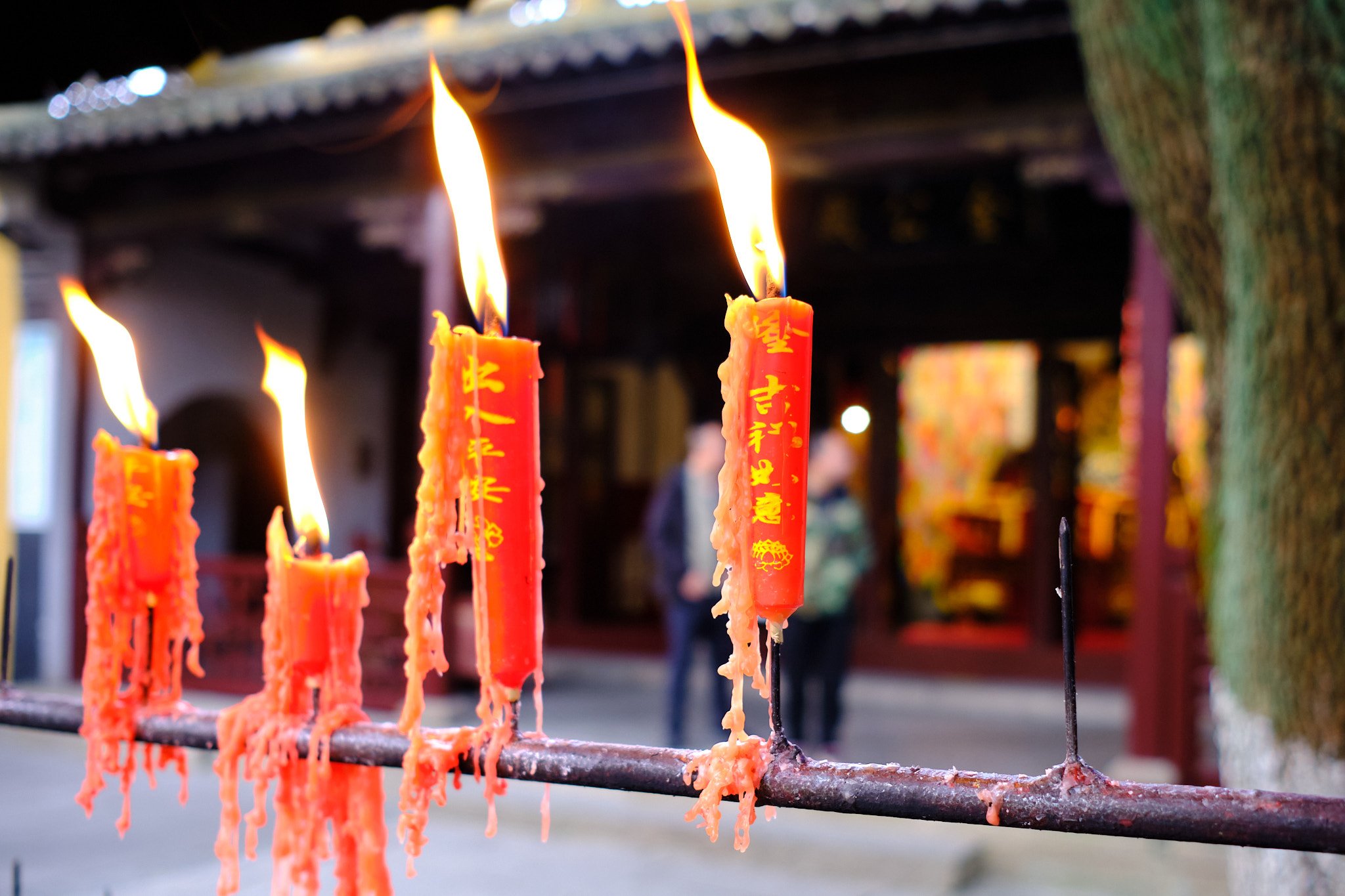China, Tai An
Nestled in the heart of China, Tai An emerges as a captivating city that effortlessly blends rich cultural heritage with breathtaking natural landscapes. As I stand amidst the vibrant streets and ancient architecture, the city's vibrant energy resonates with a timeless allure. However, it's not just the cityscape that captivates the soul; rather, it's the majestic presence of Tai Shan, the sacred mountain that has stood witness to centuries of Chinese history.
Tai Shan, often referred to as the "First of the Five Sacred Mountains," holds a special place in the hearts of the Chinese people. Rising majestically on the eastern edge of Tai An, this iconic peak has been a sacred site for worship and pilgrimage for over 3,000 years. In Chinese culture, Tai Shan is believed to be a link between heaven and earth, a place where the divine meets the mortal. Emperors and poets alike have sought inspiration from its lofty heights, making it a symbol of spiritual significance and national pride.
The mountain's history is etched in the steps of ancient pilgrims and the whispers of the winds that caress its slopes. Its rugged terrain is adorned with ancient temples, stone carvings, and awe-inspiring vistas that tell tales of devotion and spiritual enlightenment. As I explore the well-worn paths leading to its summit, I can't help but feel a profound connection to the generations of seekers who have found solace and inspiration in this sacred space.
While the historical significance of Tai Shan is undoubtedly enthralling, Tai An itself offers a vibrant backdrop to this cultural tapestry. However, a visit to this enchanting city in January requires bracing oneself for the crisp embrace of winter. The cold winds weave through the narrow streets, carrying with them the whispers of centuries-old stories and the crisp scent of pine from the surrounding mountains.
So, as I embark on this journey through the heart of Tai An, where the city's pulse harmonizes with the spiritual rhythm of Tai Shan, I am ready to embrace the chill of January and immerse myself in the layers of history and culture that await.
My Friend Aaron
In Tai An, I had the incredible opportunity to reunite with my friend Aaron, a serendipitous meeting that harkened back to our adventurous encounter eight years ago during my backpacking escapades in China. Back then, Aaron, amidst his own backpacking odyssey across the country, generously invited me to join him on his route. Over six unforgettable weeks, we traversed the landscapes of Zhang Jia Jie, Le Shan Da Fu, Gulin, and Yang Shuo, creating memories that lingered long after our paths diverged. Aaron's assistance was invaluable, especially in an era when acquiring train tickets online with a passport proved challenging. His guidance not only enriched my travels but also introduced me to the delectable local dishes that define each region. Reconnecting with Aaron in Tai An felt like revisiting an old chapter, and together, we embarked on another mountain-climbing escapade, reigniting the camaraderie that made my initial journey through China truly unforgettable.
Shanghai to Tai An
Train:
Begin your journey by boarding a high-speed train from Shanghai to Tai'an, an approximately 5-hour ride. The high-speed rail network in China ensures a swift and comfortable transit, allowing you to relax and enjoy the scenic landscapes passing by your window. Tickets for these trains can be booked in advance, with costs varying based on the class of travel. A second-class seat typically provides a comfortable option at a reasonable price. Second Class: ¥300-500 (approximately).
By Air: For those seeking a quicker option, you can take a flight from Shanghai Pudong International Airport to Jinan Yaoqiang International Airport, the nearest airport to Tai An. Once you arrive in Jinan, you can take a taxi or a connecting bus to reach Tai An, which is approximately a 2-hour drive away. The total travel time, including the flight and ground transportation, averages around 3 to 4 hours. Flight prices can vary depending on the time of booking and the airline, ranging from ¥800-1500 (CNY) for a one-way ticket.
By Bus: If you prefer a more budget-friendly option, buses operate between Shanghai and Tai An. The journey takes around 8 to 10 hours, offering a cost-effective alternative for travelers with a bit more time on their hands. Bus tickets typically range from ¥200-300 (CNY).
Attractions
Mount Tai International Climbing Festival:
If you happen to visit in September, don't miss the Mount Tai International Climbing Festival. This annual event attracts climbers from around the world to participate in a variety of activities, fostering a sense of camaraderie against the backdrop of Mount Tai's majestic slopes.
Dai Temple:
Nestled at the foot of Mount Tai, Dai Temple is a masterpiece of ancient Chinese architecture. Dedicated to the worship of Mount Tai and its deities, the temple complex features intricate sculptures, ancient halls, and serene courtyards. The Red Gate Palace, the main hall of the temple, is adorned with magnificent carvings and provides a glimpse into the imperial rituals conducted here throughout history.
Mount Tai (Tai Shan):
As the centerpiece of Tai An, Mount Tai is a UNESCO World Heritage Site and one of China's Five Sacred Mountains. The ascent to its summit is a pilgrimage for many, offering breathtaking views of the surrounding landscapes. Explore ancient temples such as the Dai Temple and the Azure Clouds Temple, each contributing to the mountain's spiritual aura. The sunrise from the Jade Emperor Summit is a spectacle not to be missed.
Tickets:
The entrance ticket to Mount Tai typically costs around ¥130-150 (CNY) per person. However, prices may vary based on factors such as age, nationality, and whether you visit during peak tourist seasons.
If you prefer a less strenuous ascent, there is a cable car available that can take you partway up the mountain. The cable car ticket prices are separate from the entrance ticket and are approximately ¥100-150 (CNY) for a one-way trip, and ¥180-220 (CNY) for a round trip.
The Hike
The hike to the summit of Mount Tai can vary depending on the route chosen and your starting point. The most popular route is the Red Gate (Tianjie) route, which is approximately 6.5 kilometers (about 4 miles) long and takes around 4-5 hours to ascend, depending on your pace. This route is known for its scenic beauty and historical significance, passing by key attractions such as the Dai Temple and the 18 Bends.
For those seeking a shorter hike, there is a cable car available that transports visitors partway up the mountain, reducing the hiking distance.
Where to stay?
In Tai An
Ramada Plaza Taian: This upscale hotel combines modern luxury with convenient amenities. Featuring spacious rooms, multiple on-site restaurants, and a fitness center, Ramada Plaza Taian provides a comfortable retreat. Price Range: ¥500-800 (CNY) per night.
Four Points by Sheraton Tai'an: A global brand known for quality service, Four Points by Sheraton Tai'an offers contemporary accommodations, a rooftop restaurant with city views, and a fitness center. Price Range: ¥600-900 (CNY) per night.
Taian Lijing Plaza Hotel: Centrally located, Taian Lijing Plaza Hotel provides a range of room options, on-site dining, and meeting facilities. The hotel is well-suited for both business and leisure travelers. Price Range: ¥400-600 (CNY) per night.
On Mount Tai (Tai Shan):
Tai Shan Hotel: Located atop Mount Tai, Tai Shan Hotel provides comfortable accommodations with a traditional touch. Guests enjoy proximity to the summit and various scenic spots. Price Range: ¥300-500 (CNY) per night.
Tai'an N° 7 Inn Mount Tai: This guesthouse-style accommodation offers cozy rooms and a relaxed atmosphere, perfect for those seeking a more intimate stay. Price Range: ¥200-300 (CNY) per night.
Hongmen Holiday Inn: Strategically located, Hongmen Holiday Inn provides comfortable lodgings and easy access to the Hongmen Scenic Area. Price Range: ¥250-400 (CNY) per night.








